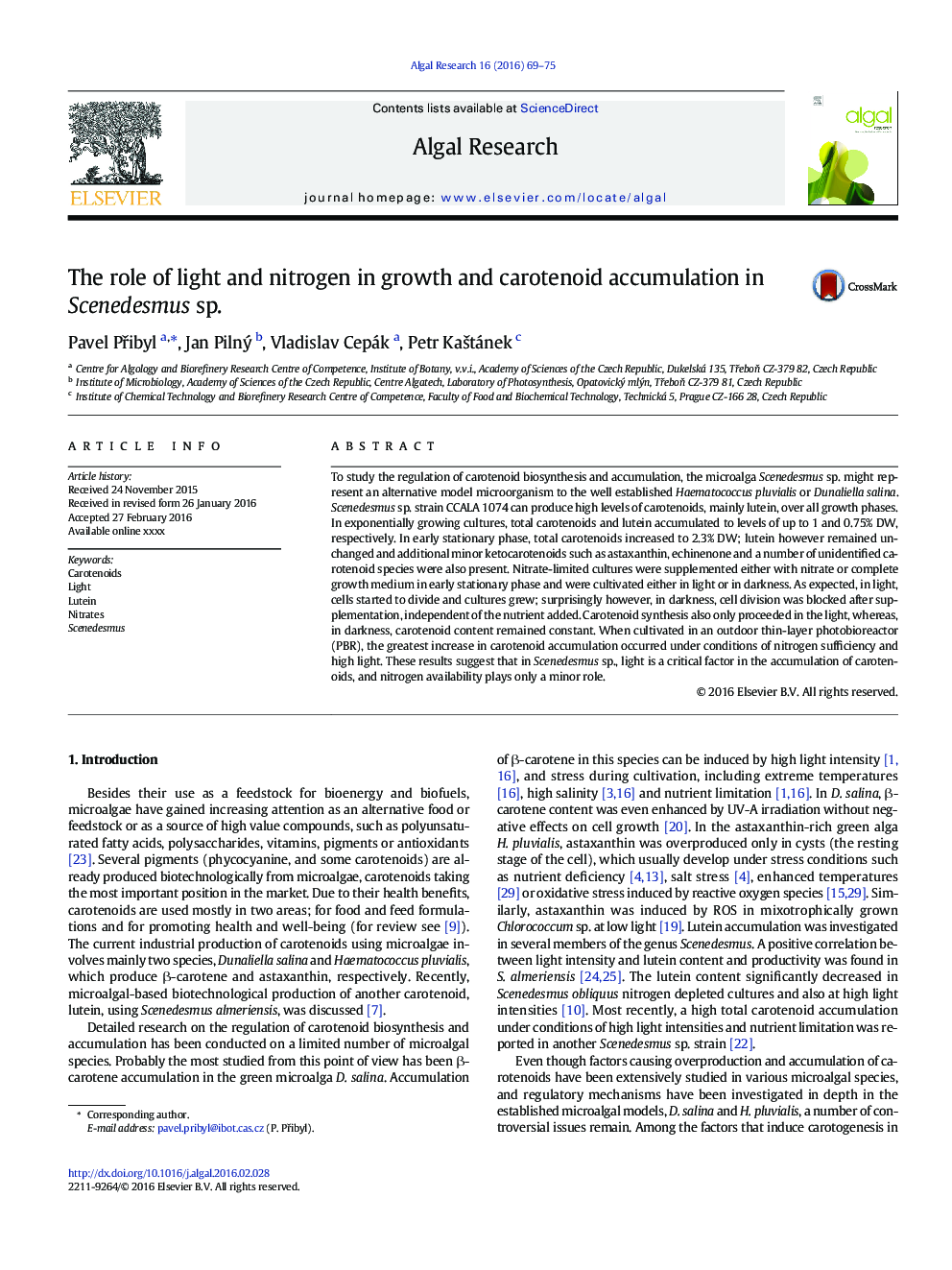| Article ID | Journal | Published Year | Pages | File Type |
|---|---|---|---|---|
| 8086989 | Algal Research | 2016 | 7 Pages |
Abstract
To study the regulation of carotenoid biosynthesis and accumulation, the microalga Scenedesmus sp. might represent an alternative model microorganism to the well established Haematococcus pluvialis or Dunaliella salina. Scenedesmus sp. strain CCALA 1074 can produce high levels of carotenoids, mainly lutein, over all growth phases. In exponentially growing cultures, total carotenoids and lutein accumulated to levels of up to 1 and 0.75% DW, respectively. In early stationary phase, total carotenoids increased to 2.3% DW; lutein however remained unchanged and additional minor ketocarotenoids such as astaxanthin, echinenone and a number of unidentified carotenoid species were also present. Nitrate-limited cultures were supplemented either with nitrate or complete growth medium in early stationary phase and were cultivated either in light or in darkness. As expected, in light, cells started to divide and cultures grew; surprisingly however, in darkness, cell division was blocked after supplementation, independent of the nutrient added. Carotenoid synthesis also only proceeded in the light, whereas, in darkness, carotenoid content remained constant. When cultivated in an outdoor thin-layer photobioreactor (PBR), the greatest increase in carotenoid accumulation occurred under conditions of nitrogen sufficiency and high light. These results suggest that in Scenedesmus sp., light is a critical factor in the accumulation of carotenoids, and nitrogen availability plays only a minor role.
Related Topics
Physical Sciences and Engineering
Energy
Renewable Energy, Sustainability and the Environment
Authors
Pavel PÅibyl, Jan Pilný, Vladislav Cepák, Petr KaÅ¡tánek,
